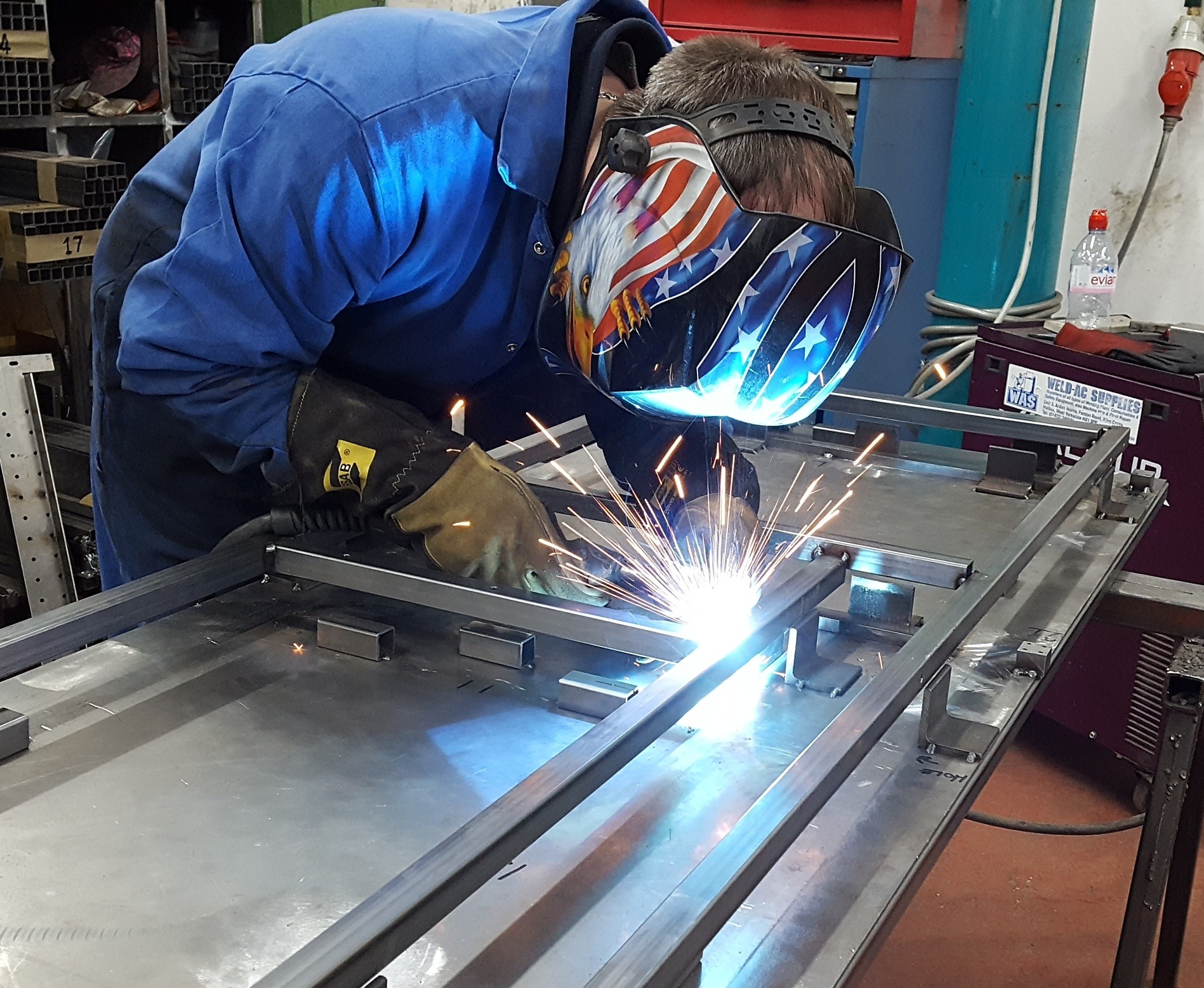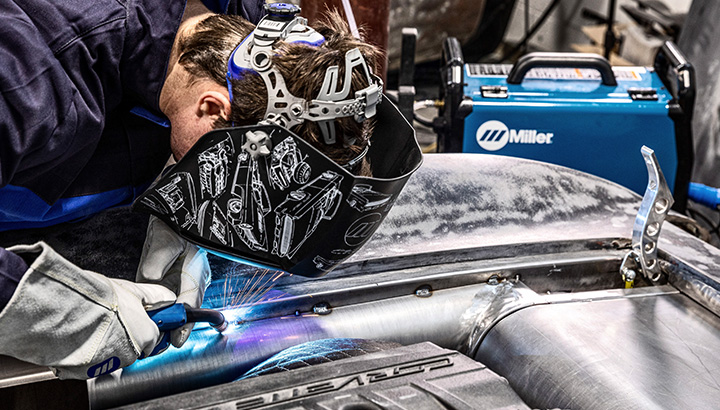All Regarding Welding: Trick Insights Into Techniques and Finest Practices for Success
Welding incorporates a variety of strategies, each matched for certain materials and applications. Comprehending these techniques, such as GMAW, SMAW, and TIG, is important for achieving excellent results. The right tools and safety and security techniques can not be forgotten. As prep work and troubleshooting play crucial roles in the welding process, mastering these elements can greatly enhance the high quality of the end product. What are the vital elements that guarantee an effective weld?
Understanding Various Welding Techniques
Welding methods include a range of techniques, each suited to specific applications and materials. Amongst one of the most typical strategies are Gas Steel Arc Welding (GMAW), Secured Metal Arc Welding (SMAW), and Tungsten Inert Gas Welding (TIG) GMAW, likewise called MIG welding, is prominent for its speed and versatility, making it ideal for slim materials. SMAW, or stick welding, is favored for its simplicity and performance in exterior atmospheres, especially with thicker metals. TIG welding offers accuracy and control, making it appropriate for elaborate work and non-ferrous steels (Fabrication). Each technique has its distinct benefits and factors to consider, allowing welders to select the most effective method based upon the task's needs, material kind, and preferred outcomes. Understanding these techniques is important for successful welding
Important Welding Equipment and Tools
While various welding methods need particular abilities, the best tools and tools are similarly crucial for achieving high quality outcomes. Vital welding tools includes welding machines, which vary depending upon the technique-- such as MIG, TIG, or stick welding. Protective equipment, consisting of aprons, handwear covers, and headgears, assurances safety and comfort during the process. In addition, fixtures and clamps aid secure products in position, making certain accuracy in welds. Consumables like welding poles, wire, and protecting gas are additionally essential parts that influence the high quality of the weld. Devices such as mills and cutters assist in surface area preparation and post-weld ending up, adding to a specialist result. Investing in high-quality tools eventually improves the performance and efficiency of welding tasks.
Safety Practices in Welding
Appropriate safety methods are essential in the welding industry to shield workers from potential threats. Welders have to put on proper personal protective tools (PPE), consisting of helmets with correct shading, handwear covers, and flame-resistant clothes. Sufficient air flow is vital to reduce direct exposure to unsafe fumes and gases generated during the welding procedure. Furthermore, employees must be trained in the correct handling of welding tools to stop mishaps. Fire precaution, such as keeping flammable products away from the welding location and having fire extinguishers conveniently available, are needed. Normal assessments of equipment and work spaces can assist determine possible threats before they lead to crashes. By sticking to these safety methods, welders can develop a much safer working environment and minimize risks connected with their profession.
Readying Products for Welding
Preparing products for welding is a crucial step that greatly influences the top quality and integrity of the final product (Belgrade Fabrication). Proper prep work includes cleaning up the surface areas to eliminate impurities such as dirt, corrosion, and oil, which can compromise the weld. Strategies such as grinding, sanding, or making use of solvents are generally used to attain a clean surface. Furthermore, guaranteeing that the products fit with each other snugly is necessary; gaps can lead to weak welds. It's additionally crucial to consider the placement and positioning of the components, as this will influence the simplicity of welding and the last end result. Picking the ideal filler material and making certain compatibility with the base steels is necessary for attaining solid, sturdy welds.
Tips for Getting High-Quality Welds
Attaining high-quality welds needs attention to detail and adherence to ideal techniques throughout the welding process. Proper joint prep work is essential, making sure surface areas are clean and cost-free from contaminants. Choosing the proper filler material and welding method based on the base steels is vital for optimal bonding. Maintaining constant traveling speed and angle while welding can promote and prevent problems uniformity. In addition, regulating warm input is vital; excessive warm can cause warping and weakened joints. If necessary, regularly inspecting the welds throughout the process permits for immediate adjustments. Employing ideal post-weld therapies, such as cleansing and stress relief, can boost the durability and stability of the weld, inevitably ensuring a successful result.
Repairing Typical Welding Issues
Welding frequently presents difficulties that can affect the top quality and honesty of the end product. Usual problems such as porosity, irregular weld beads, and getting too hot can occur, each needing particular repairing techniques. Recognizing these troubles is vital for welders to improve their abilities and attain suitable outcomes.
Porosity Problems Clarified
Although porosity can often be forgotten, it stays a crucial issue in welding that can endanger the integrity of a completed item. Porosity refers to the presence of small gas pockets within the weld grain, which can damage the joint and lead to premature failure. This trouble normally emerges from contaminants, dampness, or inappropriate protecting gas insurance coverage throughout the welding procedure. To alleviate porosity, welders need to confirm that the base products outlaw welding are tidy and dry, make use of appropriate protecting gases, and keep consistent welding criteria. Frequently checking the devices and environment can also assist determine possible concerns prior to they materialize in the weld. Attending to porosity successfully is essential for achieving solid, durable welds that satisfy top quality standards.

Inconsistent Weld Beans
Inconsistent weld grains can significantly affect the high quality and stamina of an ended up product. Various aspects contribute to this problem, consisting of inappropriate travel rate, incorrect amperage setups, and irregular electrode angles. When the welder relocates too quickly, a grain may show up narrow and lack infiltration, while moving also gradually can create too much accumulation. Furthermore, using the wrong amperage can lead to either damaging or excessive spatter, both of which concession weld honesty. The welder's technique, such as irregular lantern Check Out Your URL motion, can additionally lead to uneven bead appearance. To alleviate these problems, welders must concentrate on maintaining stable, controlled activities and making certain appropriate devices settings to attain harmony in their welds. Consistency is crucial to accomplishing reputable and solid welds.
Overheating and Bending Issues
Too much warmth during the welding process can lead to substantial getting too hot and contorting issues, impacting the architectural integrity of the work surface. These problems commonly materialize as distortion, which can compromise alignment and fit-up, making additional setting up challenging. Variables adding to overheating consist of the selection of welding specifications, such as voltage and take a trip rate, in addition to the kind of product being welded. To alleviate these concerns, welders must preserve constant travel rate and appropriate warm input while checking the work surface temperature. In addition, preheating or post-weld warmth treatment can aid reduce stresses brought on by quick air conditioning - Belgrade Fabrication. Routine inspection and adherence to ideal methods are crucial in preventing getting too hot and guaranteeing the durability and dependability of bonded frameworks
Frequently Asked Inquiries
What Are the Occupation Opportunities in the Welding Industry?
The welding industry offers diverse occupation possibilities, including positions as welders, assessors, educators, and designers. Professionals can operate in production, construction, aerospace, and automobile fields, taking advantage of solid need and affordable wages in different roles.
How Can I Enhance My Welding Rate Without Giving Up Top Quality?
To boost welding rate without sacrificing high quality, one should practice efficient methods, maintain devices, enhance setups, and boost hand-eye control. Routine training and looking for feedback can likewise greatly add to accomplishing quicker, top quality welds.
What Accreditations Are Available for Welders?
Various accreditations exist for welders, consisting of those from the American Welding Culture (AWS), the National Center for Construction Education And Learning and Research (NCCER), and various industry-specific companies. These qualifications improve employability and show skill effectiveness.
Just How Does Welding Affect the Residences of Metals?
Welding affects the weldable properties of steels by changing their microstructure, which can lead to changes in solidity, toughness, and ductility. Warmth input and cooling rates during the process substantially affect these material features.
Can I Weld Dissimilar Metals Together?
